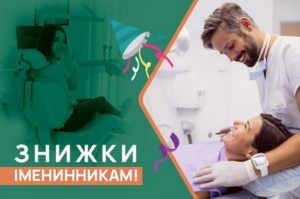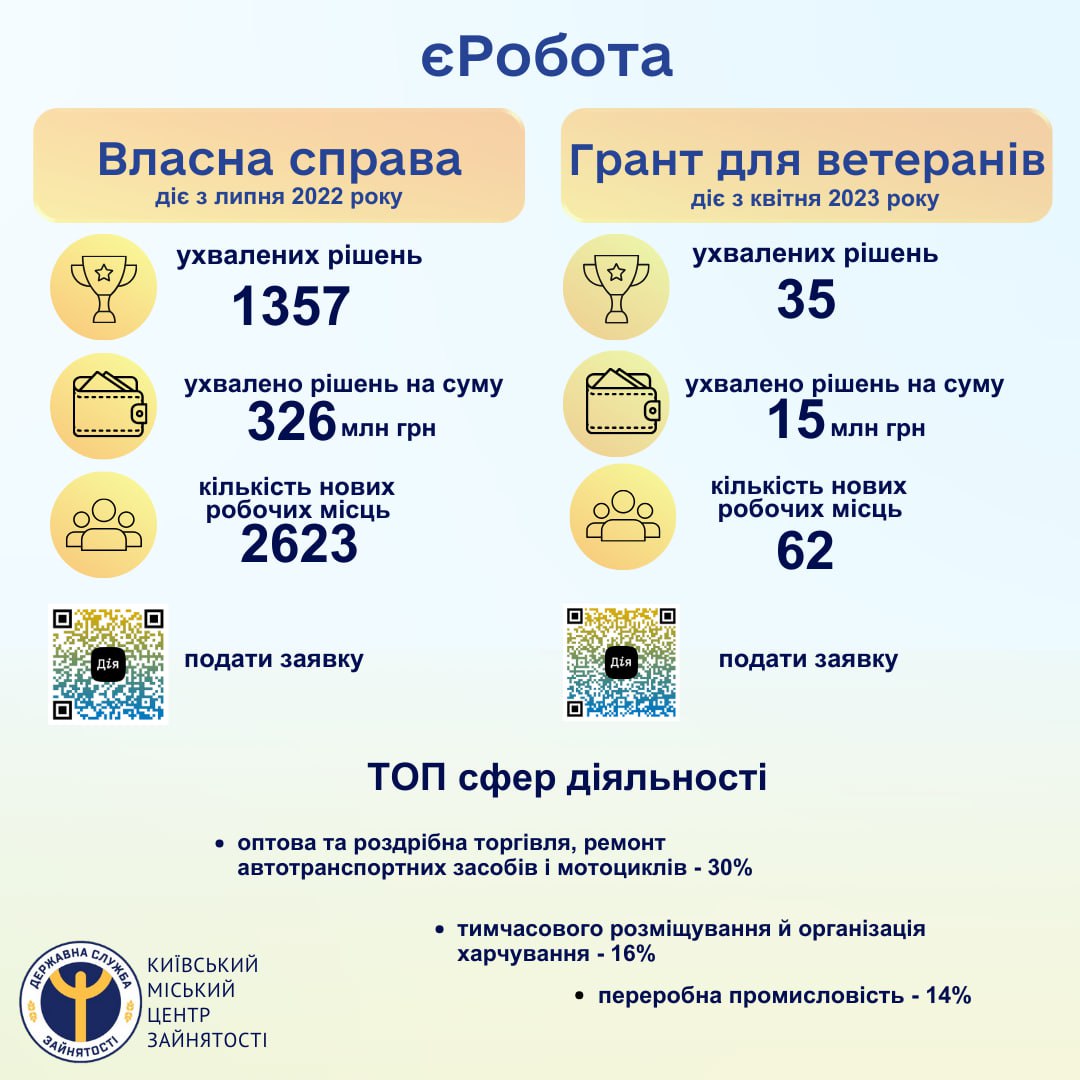
– 45% for comprehensive professional teeth cleaning!
(within 14 days before and after your birthday).
Is it your birthday? Create a mood for yourself – treat yourself to a radiant smile and get a 45% discount on hygienist services as a gift from ADONIS. After all, a beautiful smile creates not only a mood, it works wonders.
Terms of the promotion
– The special offer is valid from 01.11.23 to 31.03.24.
– The cost of a comprehensive hygienic cleaning of the oral cavity is 900 UAH instead of 1,650 UAH (cleaning includes ultrasonic cleaning, Air flow procedure and teeth polishing).
Special conditions are valid in all ADONIS* dental departments.
– All dentists take part in the promotion, except for Dr. Kovalchuk S.A.
– A 45% discount is available to all birthday celebrants who have reached the age of 14.
– To receive the discount, it is necessary to present an identity document with the specified date of birth (passport, driver’s license, copy of the birth certificate).
– The offer is valid for 14 days before and 14 days after the birthday.
– The offer does not apply to persons serviced under insurance programs.
*Where is it?
The offer is valid in ADONIS dentistry at the following locations:
– Kyiv, 26-G Dniprovska naberezhna St. (Osokorky);
– Kyiv, 8-B Raisy Okipnoyi St. (Livoberezhna metro station);
– 39 Spaska St., Kyiv (Kontraktova Square);
– Sofiyivska Borshchahivka, 90 Akademika Shalimova St.
Contacts and appointment
Make an appointment for inspection and cleaning with a specialist at the administrator or through the contact center
0 800 707 707
You can also make an appointment by calling the dental clinic:
067 314 34 38
Indicate that you want to take advantage of the appropriate discount.
ADONIS: we make quality medicine affordable.
ADONIS dentistry – taking care of the health of your smiles.
ADONIS is a network of private medical centers for adults and children. ADONIS private clinic was founded more than 20 years ago.
Its network includes 12 branches in Kyiv and the region, including two own maternity hospitals and a stem cell laboratory.
In the clinic’s branches, doctors treat patients in 66 medical areas.
During the war, the branches with surgical units continue to help patients by providing quality medical care to military and civilians.

In 2023, Ukraine reduced exports of dairy products in monetary terms by almost 30% compared to 2022 and increased imports by more than 15%, the Union of Dairy Enterprises of Ukraine (UDEP) reported on Facebook.
“In 2023, the negative balance of exports and imports of dairy products amounted to $77.2 million, while a year earlier this figure was positive – $28.2 million. Thus, the consumption of dairy products last year “washed out” funds from Ukraine,” the industry association said.
The UMPA emphasized that import growth in 2023 occurred in almost all categories of dairy products. The difference between exports and imports (balance – IF-U) ranged from -289 tons in September to -615 tons in March for fermented milk products and from -1398 tons in January to -2902 tons in December for cheese.
Imports of butter exceeded exports for the first time in a year in October 2023, and in November showed the most negative balance for this commodity.
In addition, in 2023, exports of butter decreased by 45%, while exports of other types of dairy products did not change significantly. In general, due to unfavorable price conditions in 2023, export revenues from sales of this product decreased by 1.4 times compared to the level of 2022.
“In 2023, the volume of imports of butter and whey increased significantly (2.4 times). The volume of cheese imports in physical terms remained at the same level, but increased by 10% in value. In general, this led to an increase in imports by more than 1.15 times compared to the previous year, 2022,” the UUL stated.

Metinvest Mining and Metallurgical Group has handed over three 3D printers to the National Guard of Ukraine as part of Rinat Akhmetov’s Steel Front military initiative.
According to a press release, the important batch of aid was handed over to the NGU servicemen: three 3D printers and 18 kilograms of special plastic for printing components.
“Printing components on such printers is now a very popular technology among the military. It was not easy to find the equipment, it took us about 1.5 months. However, the 3D printers have been purchased and our defenders are already using them in their own workshops,” said Alexander Mironenko, Chief Operating Officer of Metinvest Group, as quoted by the press service.
According to Andriy Belyaev, commander of the 23rd Brigade of the National Guard of Ukraine, the 3D printers will be used to quickly print and replace some spare parts that can only be produced with such modern equipment.
“First of all, it will be used for automotive equipment. It will also be used to repair reconnaissance drones used to protect critical state facilities within the area of responsibility of the National Guard of Ukraine,” said Belyaev.
“Metinvest is a vertically integrated group of steel and mining companies. The group’s enterprises are located mainly in Donetsk, Luhansk, Zaporizhzhya and Dnipropetrovsk regions. The main shareholders of the holding are SCM Group (71.24%) and Smart Holding (23.76%), which jointly manage it. Metinvest Holding LLC is the management company of Metinvest Group.

An agreement on the development of electronic communications, 5G corridors and cooperation in the field of digitalization between Ukraine and Romania was signed by Mykhailo Fedorov, Vice Prime Minister for Innovation, Education, Science and Technology Development and Minister of Digital Transformation, and Bogdan-Gruia Ivan, Minister of Research, Innovation and Digitization.
“This will allow the exchange of experience between Ukrainian and Romanian specialists, as well as the implementation of joint projects for the development of telecommunications infrastructure, digitalization, and cybersecurity,” the Ministry of Digital Transformation of Ukraine (MinCyber) said in a statement on Thursday.
According to the press release, the parties agreed to jointly develop 5G corridors between Ukraine and Romania, cloud infrastructure for public e-services, restore and modernize digital infrastructure affected by Russian aggression, increase the resilience and security of information and communication technologies, and strengthen cybersecurity of national networks and digital infrastructure.
The Ministry of Digital Transformation noted that the agreement will allow Ukraine to participate in EU financial support programs.

The “Own Business” program as part of the government’s eRobota project was launched in July 2022. It is designed for Ukrainians who want to receive funds to start or develop their business.
A microgrant to start or develop your own business gives a person a real chance to realize their business idea. Under this program, you can get a microgrant for starting or developing a business from UAH 50 to 250 thousand, depending on the number of jobs created. This is a non-refundable financial assistance provided by the state to individual entrepreneurs, individuals and legal entities – in return, the microgrant recipient undertakes to create new jobs, employ workers and pay salaries and taxes for three years.
The Kyiv City Employment Center invites residents of the capital to participate in the state grant program “Own Business”.
The algorithm for receiving a microgrant:
1) Create a business plan;
2) Submit an application and a business plan through the Diia portal;
3) Defend the online business plan at the employment center;
4) Obtain a decision of the State Employment Center and open an account in an authorized bank (Oschadbank);
5) Receive funds to the account, create new jobs, hire employees and start working.
Both entrepreneurs and citizens with no business experience can receive a microgrant.
Over the course of the program, 1357 participants have been approved for financial support from the state to implement business projects in Kyiv.
The average microgrant amount was UAH 240 thousand. The total amount of microgrants amounted to UAH 326 million. Most projects are being implemented in the areas of wholesale and retail trade, repair of motor vehicles and motorcycles (30% of the total); temporary accommodation and catering (16%); and the processing industry (14%).
84% of grant recipients have a university degree, 6% have specialized secondary education, 4% have incomplete higher education, 5% have secondary education, and 1% have a scientific degree. The majority of grant program winners (60%) are individual entrepreneurs, 25% are individuals, and 15% are legal entities.
The microgrants will be used to create 2623 new jobs in Kyiv.
At the same time, since the launch of the Grant for Veterans and Their Spouses program on April 10, 2023, 35 participants’ business projects have been approved. The total amount of grants amounted to almost UAH 15 million. The program participants whose projects were given preference chose the following types of activities: production and supply of demining tools and humanitarian demining equipment; provision of medical services; wholesale and retail trade.
The program participants will create at least 62 new jobs with the grants.
Do you dream of starting or expanding a business but lack funds? There is a chance to get them by participating in grant programs. You can apply for the program right now through the Diia portal. Consultations on grants are available at the Kyiv City Employment Center. Telegram support of the Kyiv City Employment Center: https://t.me/DCZKyiv.

In the first half of 2023-2024 marketing year (MY, July-December), Ukraine set the record for rapeseed oil exports – 356 thsd tonnes, up six times compared to the same period last year, APK-Inform news agency reported.
“The significant increase in the rate and volume of exports of this product in the current season was primarily due to the high demand for rapeseed oil on the world market amid attractive prices. Difficulties with sunflower procurement during the off-season also encouraged Ukrainian mills to increase rapeseed processing,” the analysts explained.
According to their information, the main volumes of Ukrainian rapeseed oil shipments during six months of 2023-2024 MY were to the EU countries, where 54% of Ukrainian rapeseed oil was supplied, and China – 31%.